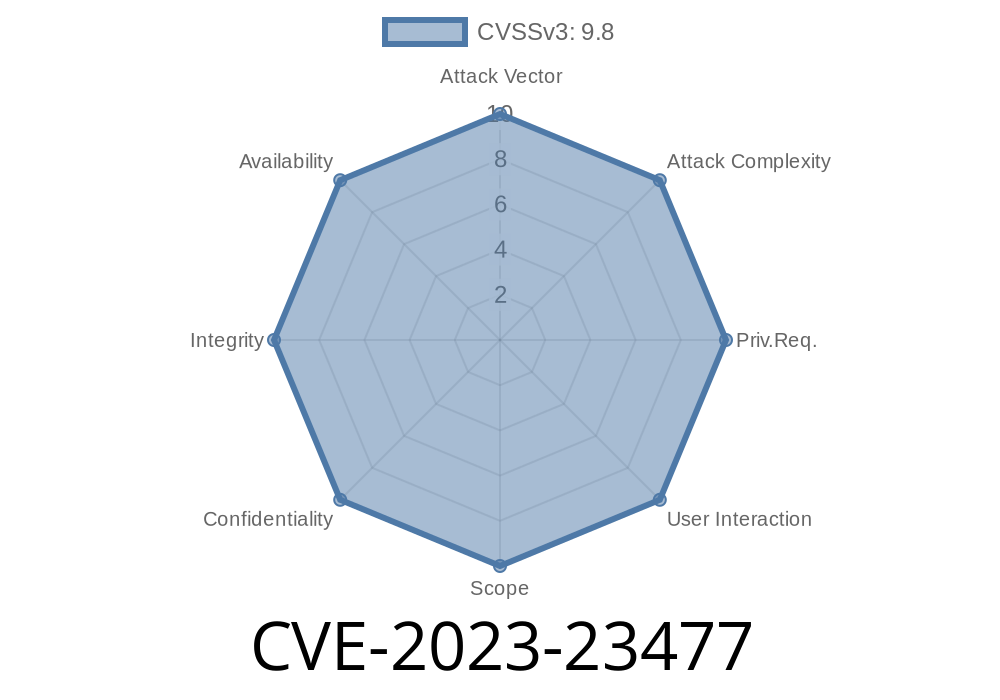A critical vulnerability has been discovered in IBM WebSphere Application Server (WAS) 8.5 and 9. traditional which could allow remote attackers to execute arbitrary code on a targeted system. IBM has assigned it an X-Force ID of 245513. This post will provide an in-depth analysis of the vulnerability, explain how the exploit works, and discuss mitigation strategies to defend against this threat.
Vulnerability Details
The vulnerability, identified as CVE-2023-23477, stems from the way IBM WAS handles serialized objects. A remote attacker can exploit this issue by crafting a specific sequence of serialized objects and sending them to the victim's WAS instance, potentially compromising the targeted system. It is important to note that this vulnerability is exploitable only when the vulnerable code is executed by a server application that deserializes untrusted data.
Exploit
In order to exploit this vulnerability, an attacker must craft a sequence of serialized objects that exploit the vulnerable WAS code. The following snippet provides a basic example of what this exploit might look like:
import java.io.ObjectOutputStream;
import java.io.FileOutputStream;
import java.rmi.MarshalledObject;
public class Exploit {
public static void main(String[] args) {
try {
Object payload = createPayload();
MarshalledObject mo = new MarshalledObject(payload);
String fileName = "exploit.ser";
ObjectOutputStream oos = new ObjectOutputStream(new FileOutputStream(fileName));
oos.writeObject(mo);
oos.close();
} catch (Exception e) {
e.printStackTrace();
}
}
private static Object createPayload() {
// Here, the attacker will create a custom payload with the exploit's logic
// This might involve using reflection, unsafe libraries, or other means
}
}
Once the attacker's exploit is crafted, it must be sent to the target IBM WAS victim. The attacker could do so using various methods, such as disguising the malicious payload within a seemingly legitimate application, deceiving unsuspecting users into executing it on their WebSphere Application Server.
The vulnerability was first reported by IBM and can be found here
- IBM Security Bulletin: https://www.ibm.com/support/pages/node/6406379
Mitigation
In order to defend against this vulnerability, it is critical that users of IBM WAS apply the necessary security updates to patch the flaw. IBM has released the following fixes:
IBM WebSphere Application Server traditional V9.: Fix Pack 9..5.9
Organizations should ensure that they are running the latest versions of IBM WebSphere Application Server to protect their systems from other known vulnerabilities. In addition, they should adopt best security practices, such as avoiding the use of vulnerable libraries and ensuring that the server application does not deserialize untrusted data.
Conclusion
The CVE-2023-23477 vulnerability in IBM WebSphere Application Server 8.5 and 9. traditional poses a significant risk to organizations using this software. By exploiting this vulnerability, a remote attacker could execute arbitrary code on a targeted system, potentially causing significant damage or loss of sensitive information. Organizations using IBM WAS should implement the necessary security updates and follow best practices to mitigate the risk of exploitation.
Timeline
Published on: 02/03/2023 19:15:00 UTC
Last modified on: 02/10/2023 04:54:00 UTC
